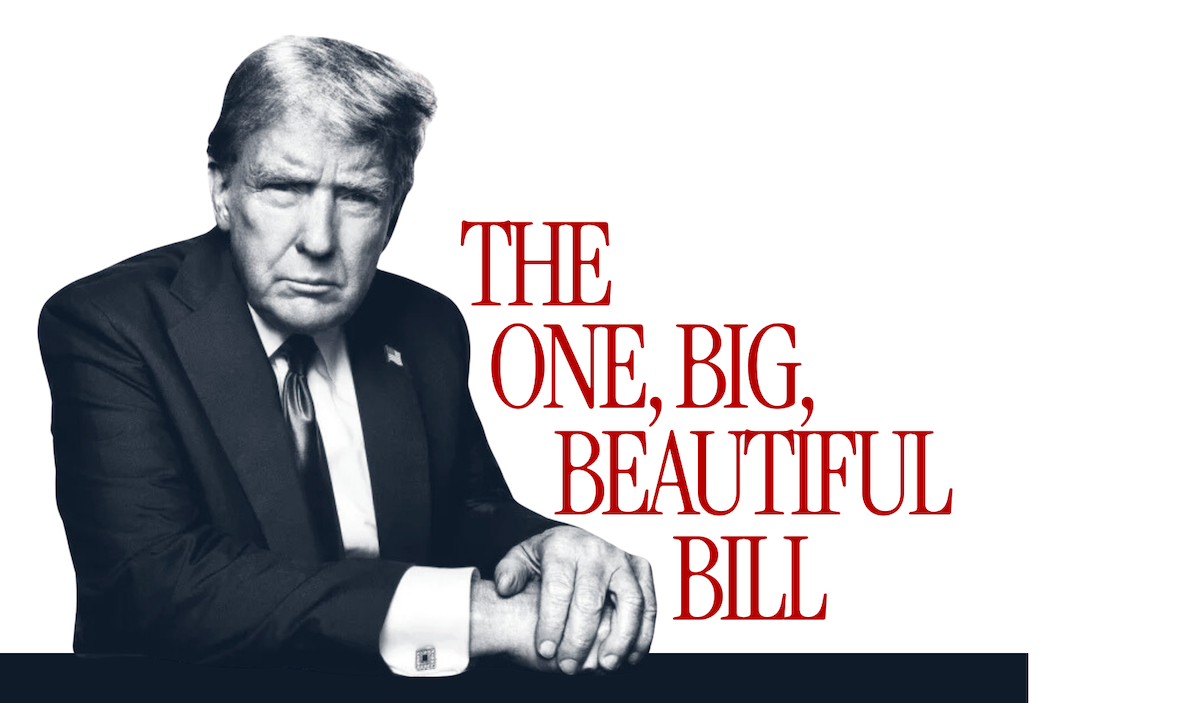9 Charts Reveal the True Impact of “One Big Beautiful Bill” (OBBB)
The U.S. Congress has passed the One Big Beautiful Bill Act (OBBB) by a razor-thin margin, sending it to the President’s desk for signature. While former President Donald Trump hails the bill as a cru

The U.S. Congress has passed the One Big Beautiful Bill Act (OBBB) by a razor-thin margin, sending it to the President’s desk for signature. While former President Donald Trump hails the bill as a crucial step to "Make America Great Again," many economists, analysts, and even former allies argue that the reality could be far less optimistic—and potentially damaging.
Hurting the Poor in the Name of Reform
OBBB plans to cut nearly $1 trillion from Medicaid over the next 10 years, potentially stripping 12 million low-income Americans of their health coverage. It also slashes the Supplemental Nutrition Assistance Program (SNAP), directly threatening food access and public health among vulnerable populations.
Although the White House claims the cuts primarily target undocumented immigrants, data shows only 1.4 million people potentially fall into that category—leaving over 10 million U.S. citizens exposed to the fallout.
College Grads to Pay the Price
The bill also tightens the screws on student debt holders. A college graduate earning $80,300 annually will, under the new provisions, pay roughly $2,929 more per year in student loan repayments—widening the burden on the middle class.
A Deficit Disaster in Disguise?
While the White House argues that the OBBB Act will reduce the federal deficit by $2 trillion over the next decade, independent research tells a different story.
According to the Congressional Budget Office (CBO), the bill’s tax cuts and spending plans will ultimately increase the deficit by around $3.3 trillion over ten years. The proposed spending reductions will be outweighed by aggressive tax cuts, especially for high-income households and corporations.
A report by the Tax Foundation notes that the bill may slightly boost economic output—adding a mere 1% growth to baseline projections—but will significantly worsen the national debt. Without OBBB, the federal deficit was expected to rise from $1.9 trillion in 2024 to $2.7 trillion by 2035. With OBBB, the projected deficit could hit $3.08 to $3.21 trillion by 2035.
Trump’s Tax Fearmongering: Exaggerated?
Trump has repeatedly warned that without OBBB, “massive tax hikes” are inevitable—citing a potential 68% increase in tax burden for Americans. However, experts call this claim misleading.
According to the Tax Policy Center, letting the 2017 Trump-era tax cuts expire would increase the average tax burden by 7.5%, not 68%. About 60% of taxpayers would see higher bills, but the hike would be modest for most.
“The 68% figure likely refers to the number of taxpayers affected, not the magnitude of their tax increases.” Elena Patel, a tax policy professor at the University of Utah said.
A Wealth Transfer to the Top
Though OBBB claims to provide “relief for working Americans,” the reality is regressive. An estimated 60% of the bill’s benefits will go to households earning above $217,000 annually. America’s top 20% of earners (those making $120,390 or more) will gain an average of $6,055, or 2.3% of income. Meanwhile, the poorest 20% are expected to lose about $560 annually, primarily due to cuts in health and nutrition programs.
Will OBBB Make China Great Again?
The bill’s most controversial provisions may lie in its attack on renewable energy. OBBB eliminates subsidies and tax credits for solar, wind, and electric vehicles—crippling America’s clean energy sector at a time when global competition in AI and green technology is heating up.
The New York Times and several think tanks argue that this move hand-delivers global clean energy leadership to China, especially as the U.S. loses both investment and talent. The U.S. could even find itself importing electricity from China in the near future.
This policy shift threatens billions in clean energy investments, most of which are located in Republican-controlled states. Studies suggest it could result in:
A 50% rise in wholesale electricity prices by 2035; an additional $16 billion annually in consumer energy costs by 2030 and loss or non-creation of over 830,000 clean energy jobs by 2030
Powering the AI Race: A National Security Issue
In the age of artificial intelligence, electricity is no longer just about lights and cooling—it’s about strategic dominance. Training next-gen AI models requires massive volumes of cheap, reliable, and clean electricity. Without renewables, America’s ability to lead in AI could falter.
Meanwhile, China is surging ahead. In 2000, China generated 1,300 terawatt-hours (TWh) of electricity, compared to the U.S.’s 3,800 TWh. Today, China produces over 10,000 TWh annually, while U.S. output has grown just 13% in 20+ years.
Building natural gas capacity fast enough to fill this gap is economically unfeasible. In contrast, Texas can now build a solar-plus-storage plant in just 18 months.
Two Winners: Trump and the CCP?
Taking all of this into account, critics argue that OBBB may hurt ordinary Americans more than it helps, while strengthening strategic rivals abroad.
As one commentator quipped: “At this point, only two political parties on Earth are likely celebrating the OBBB’s passage: Trump’s Republican Party—and the Chinese Communist Party.”
Disclaimer: The views in this article are from the original Creator and do not represent the views or position of Hawk Insight. The content of the article is for reference, communication and learning only, and does not constitute investment advice. If it involves copyright issues, please contact us for deletion.